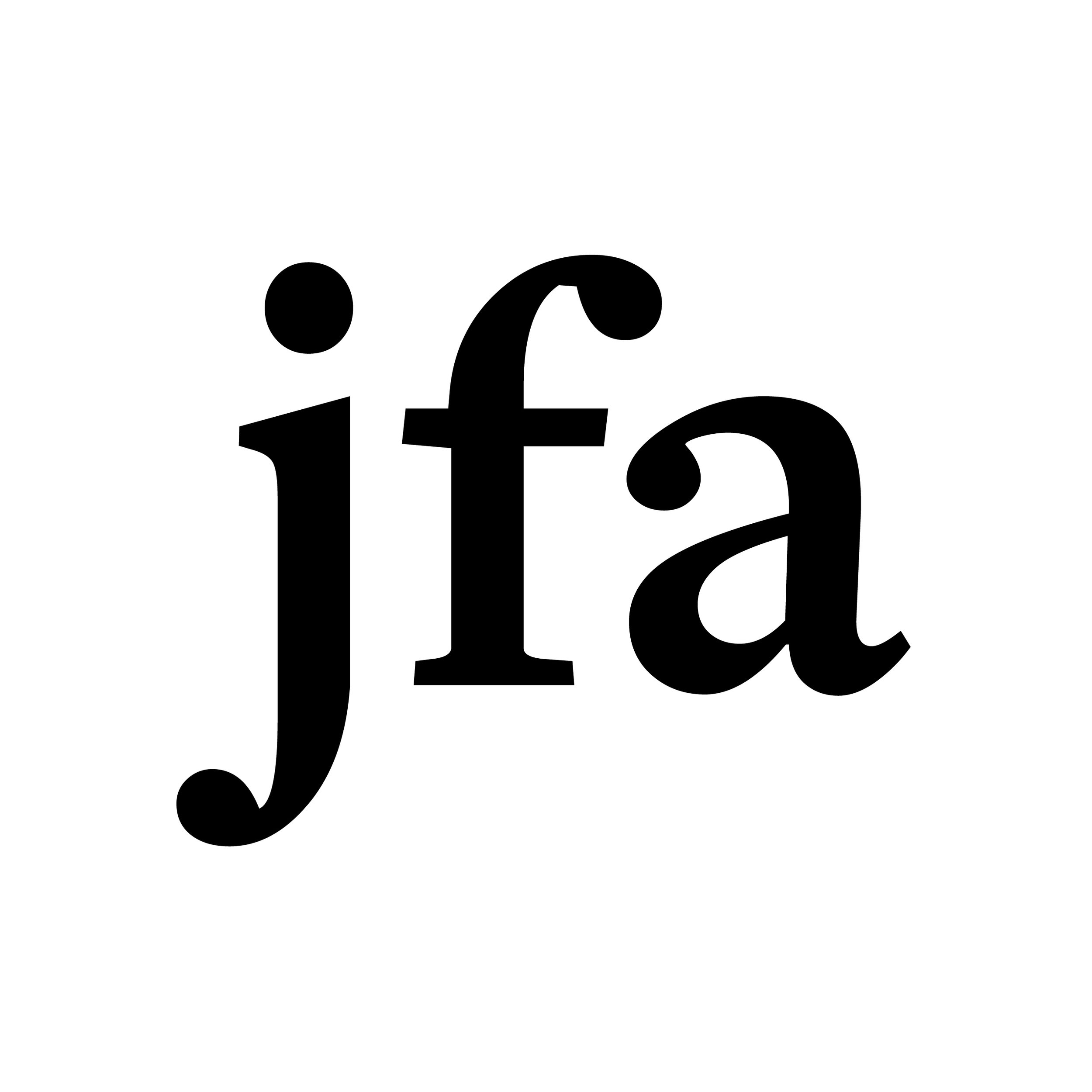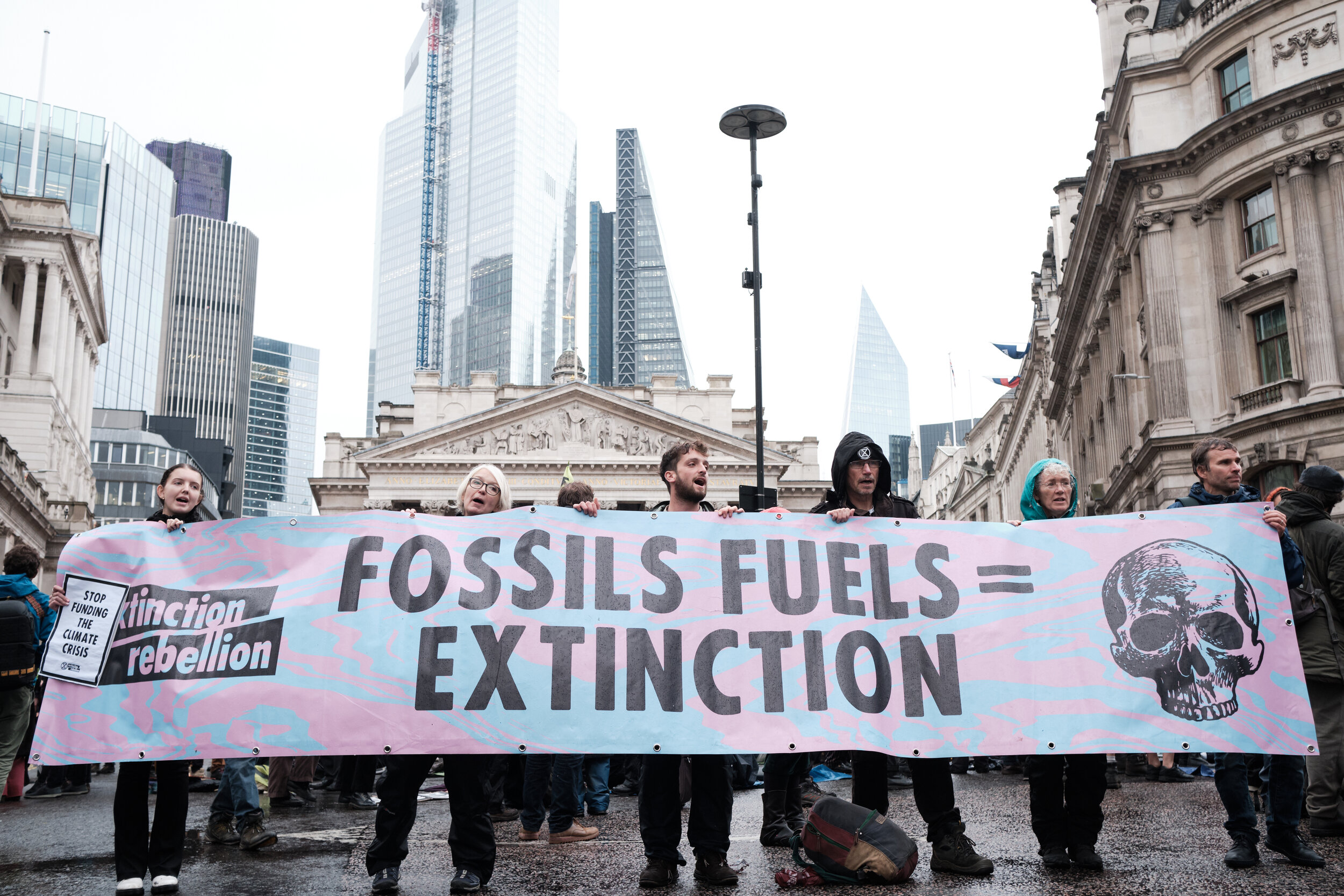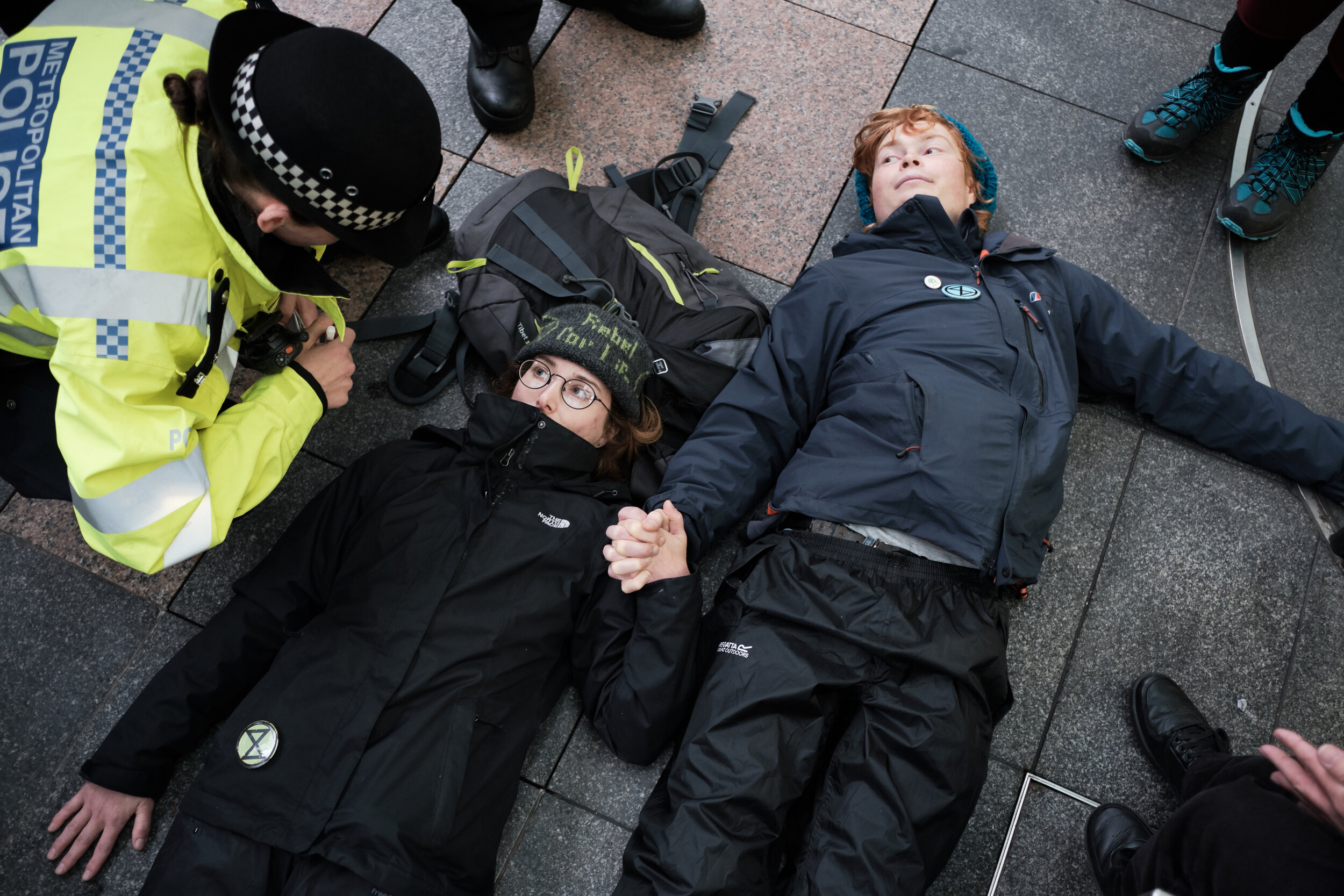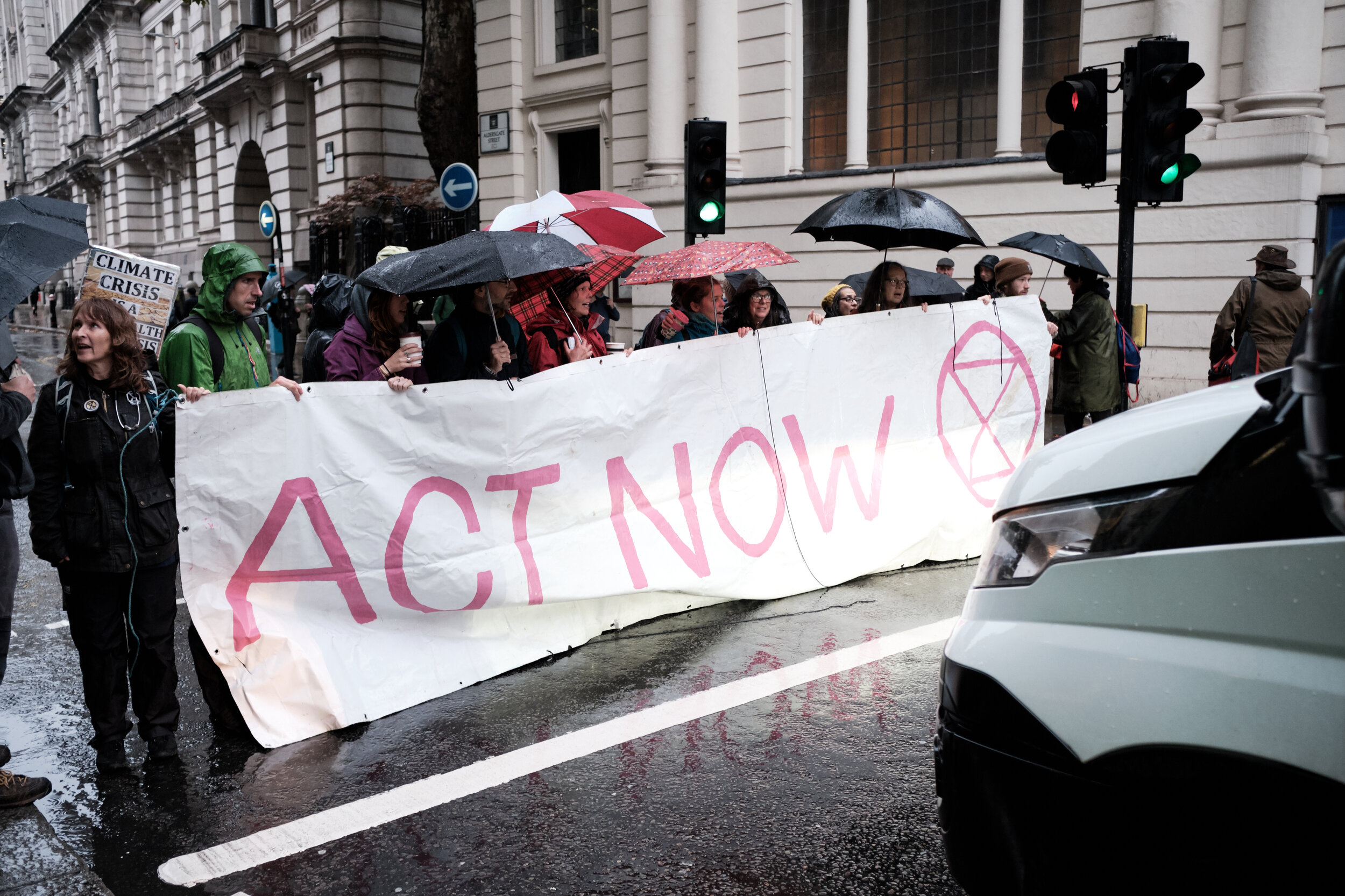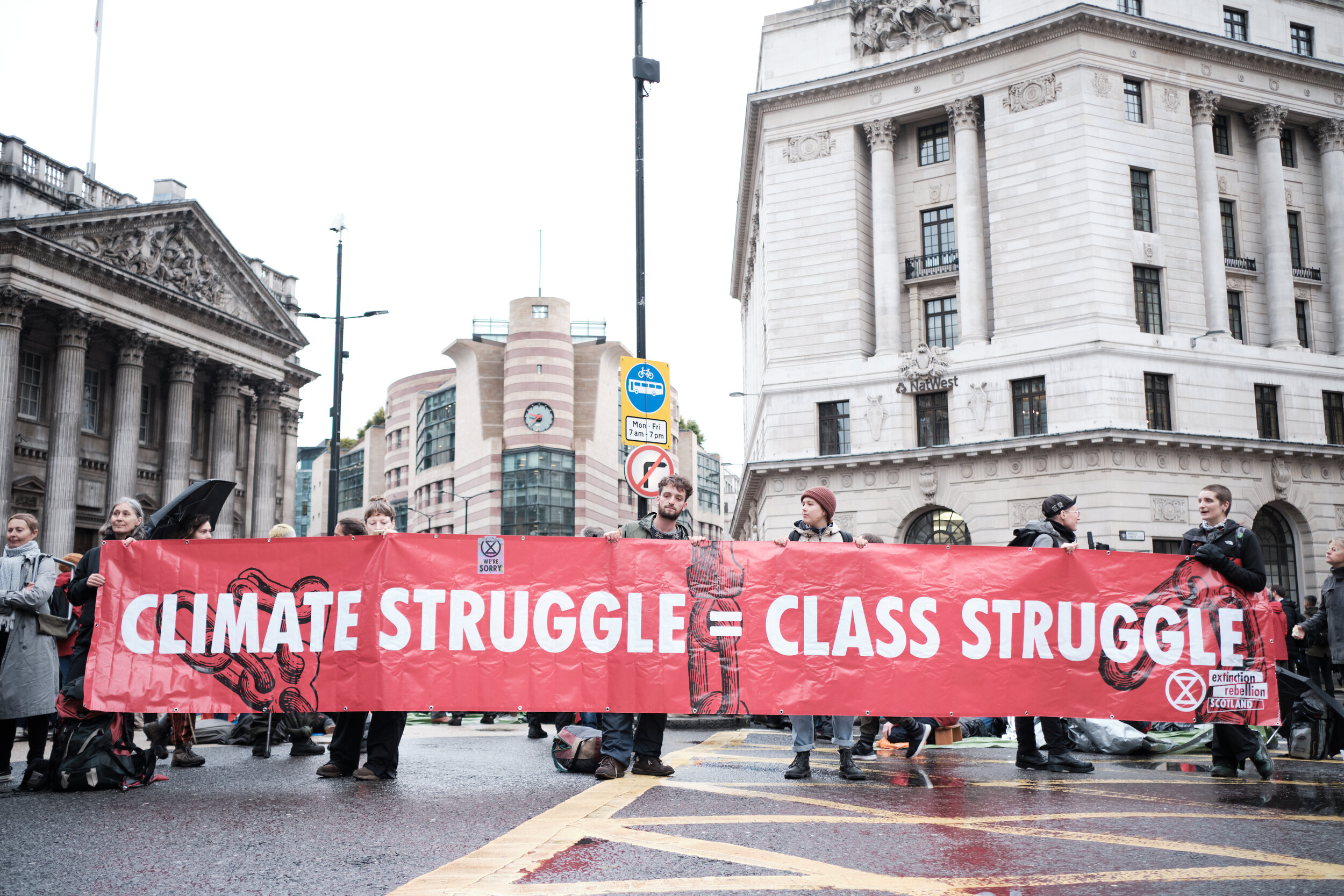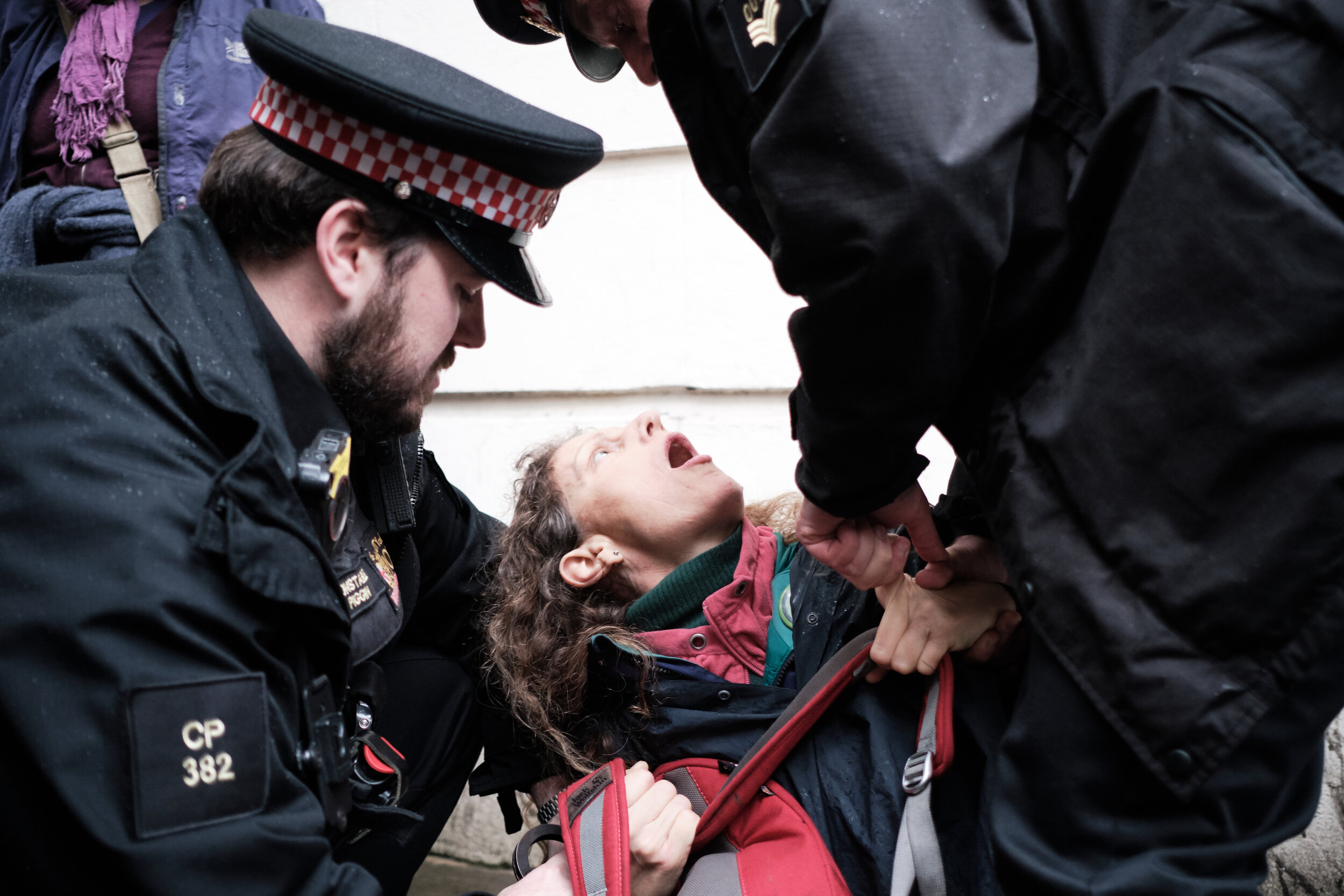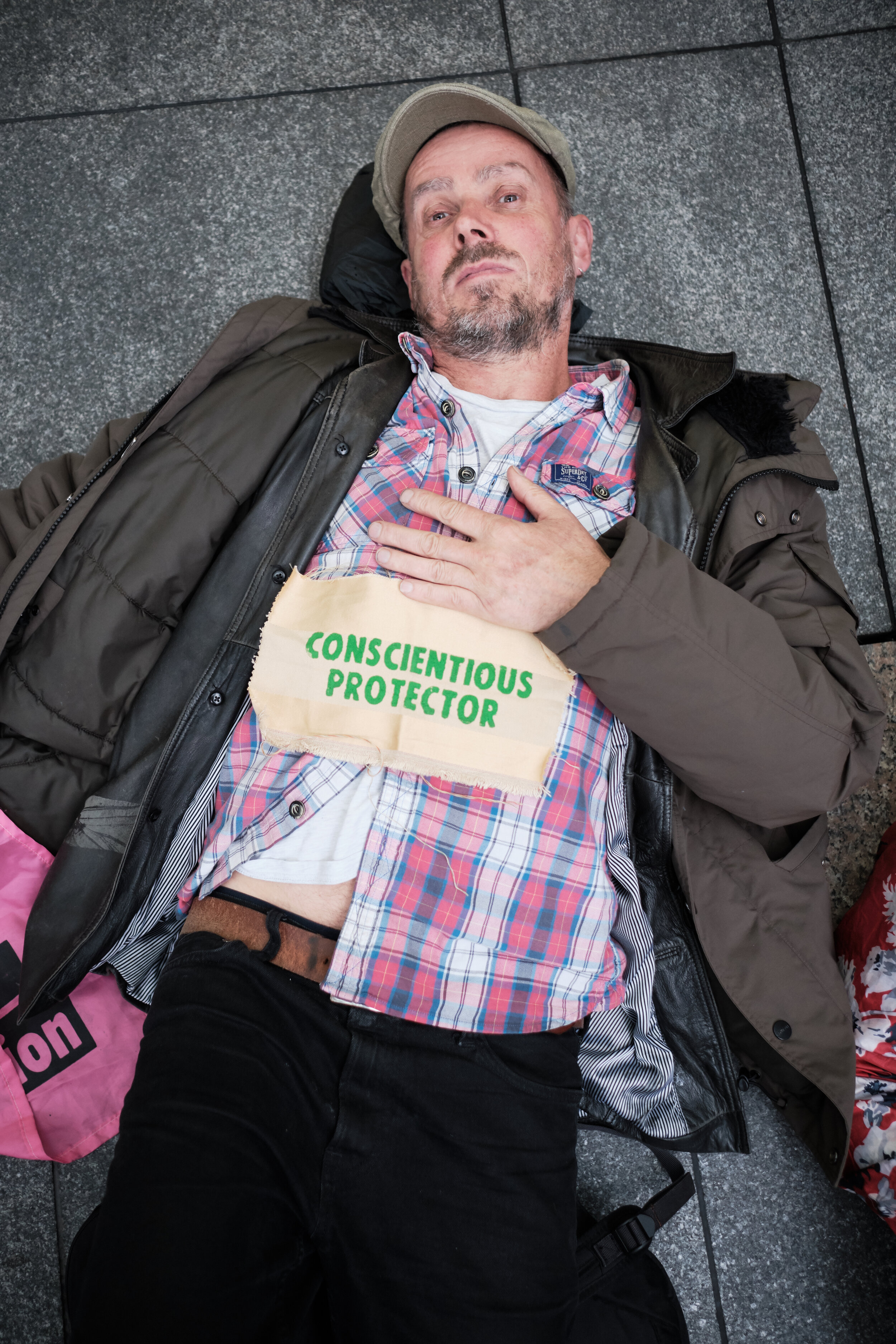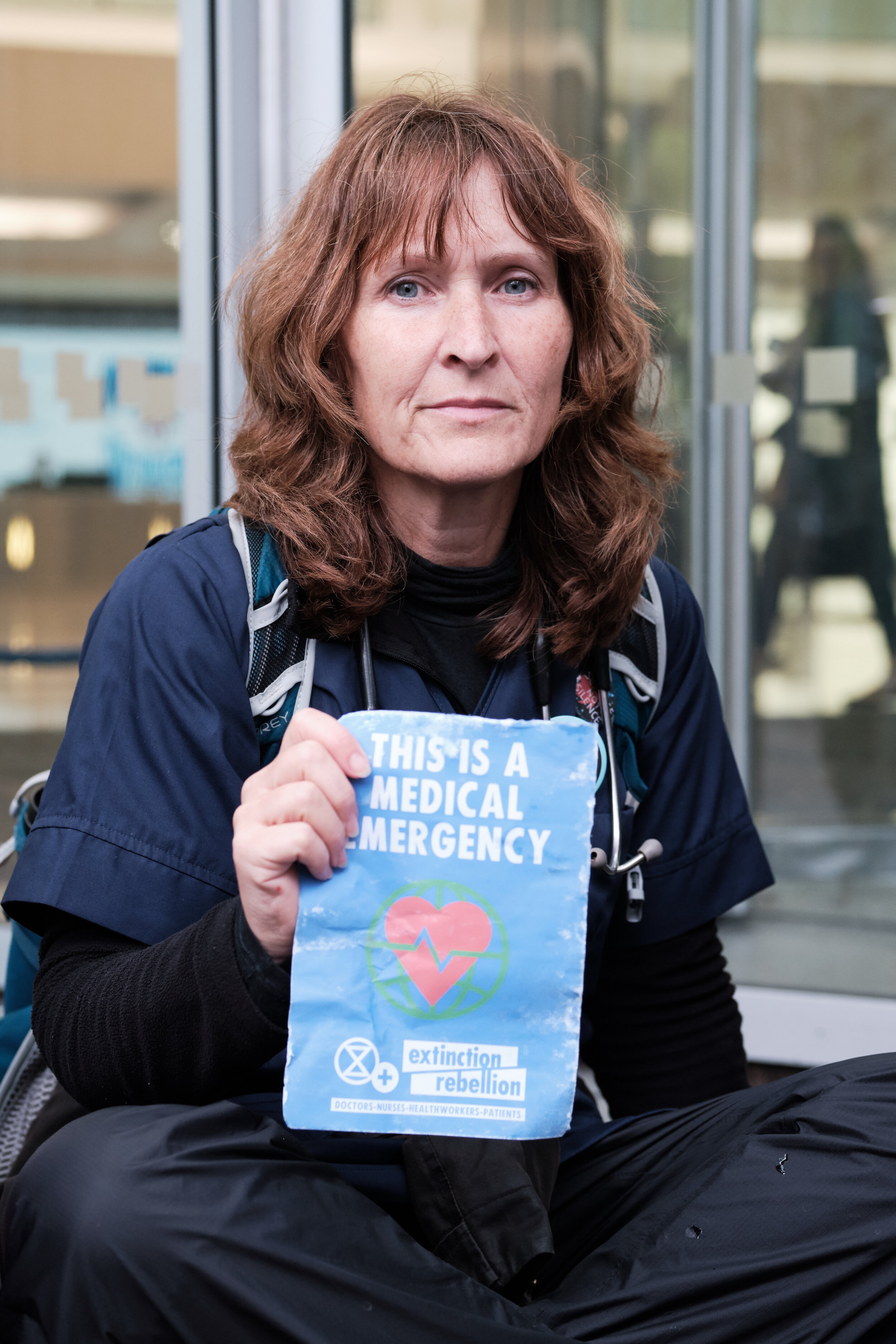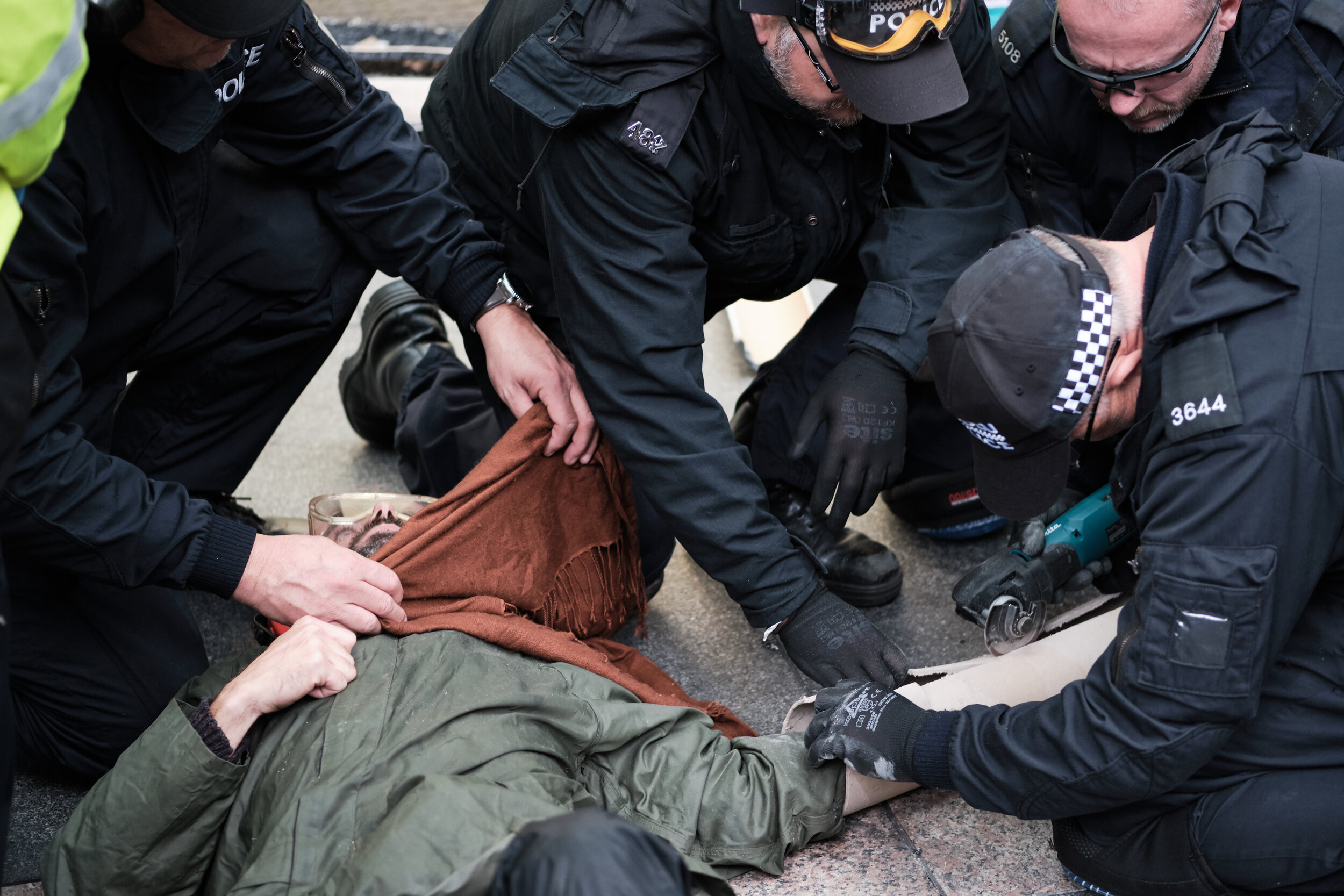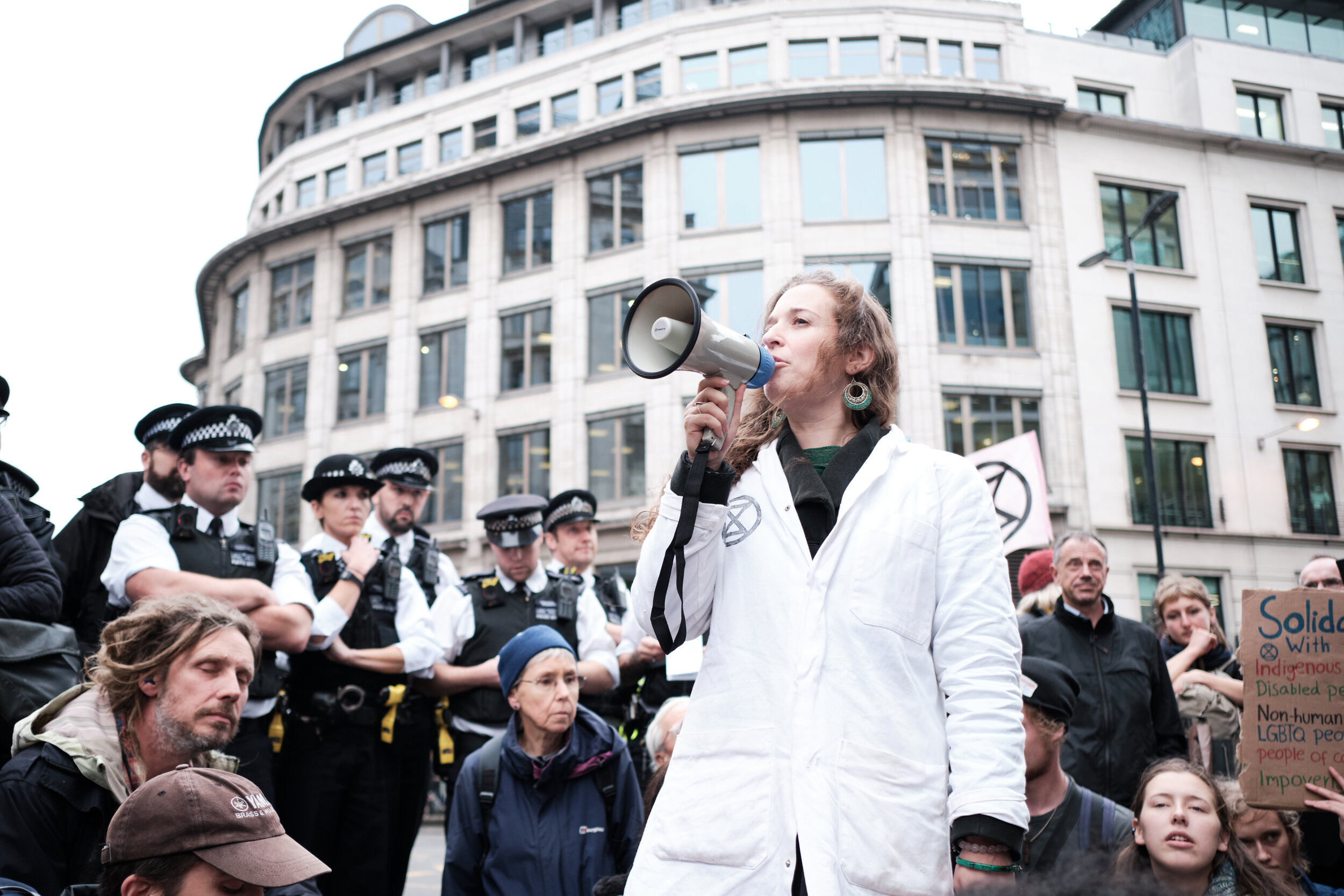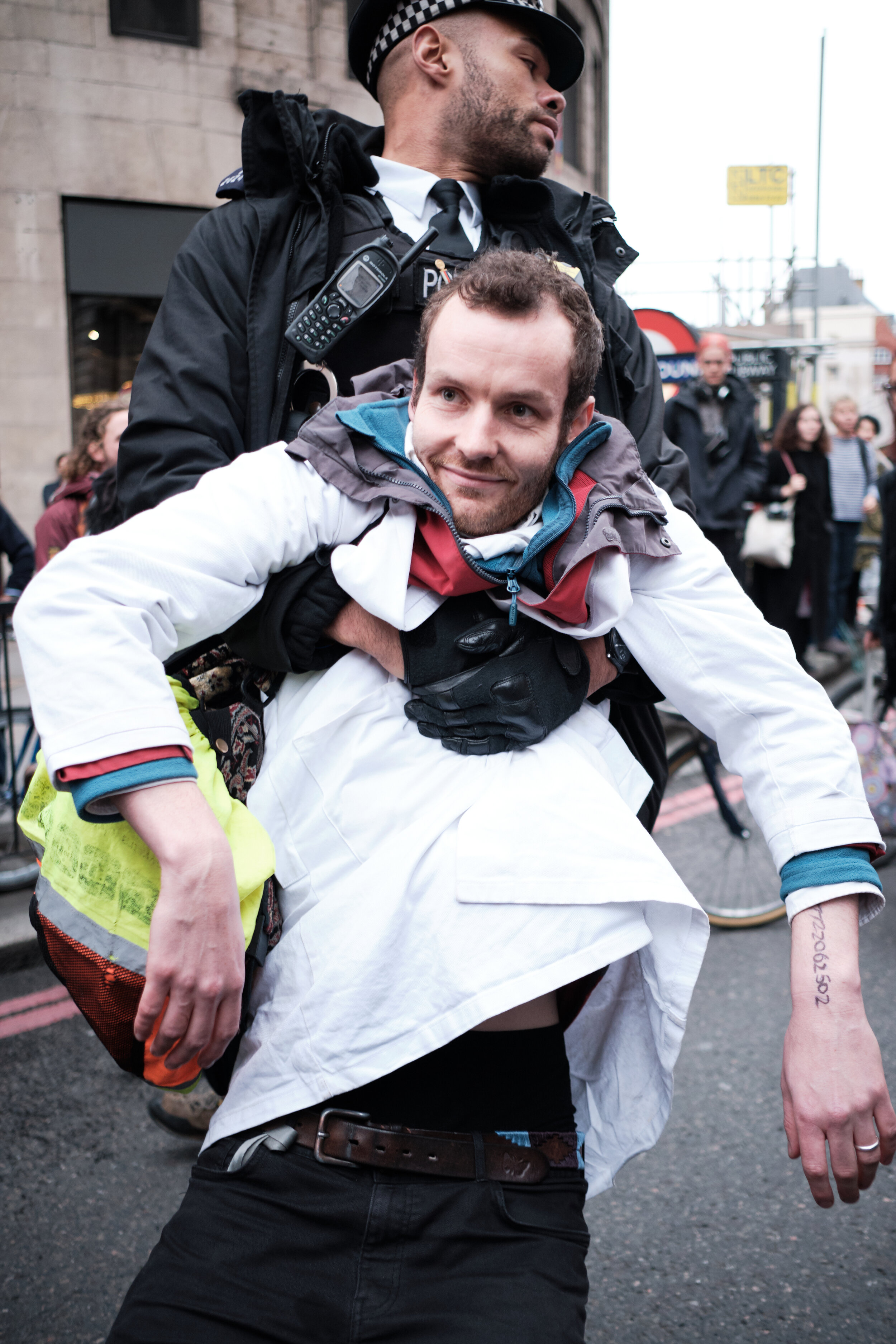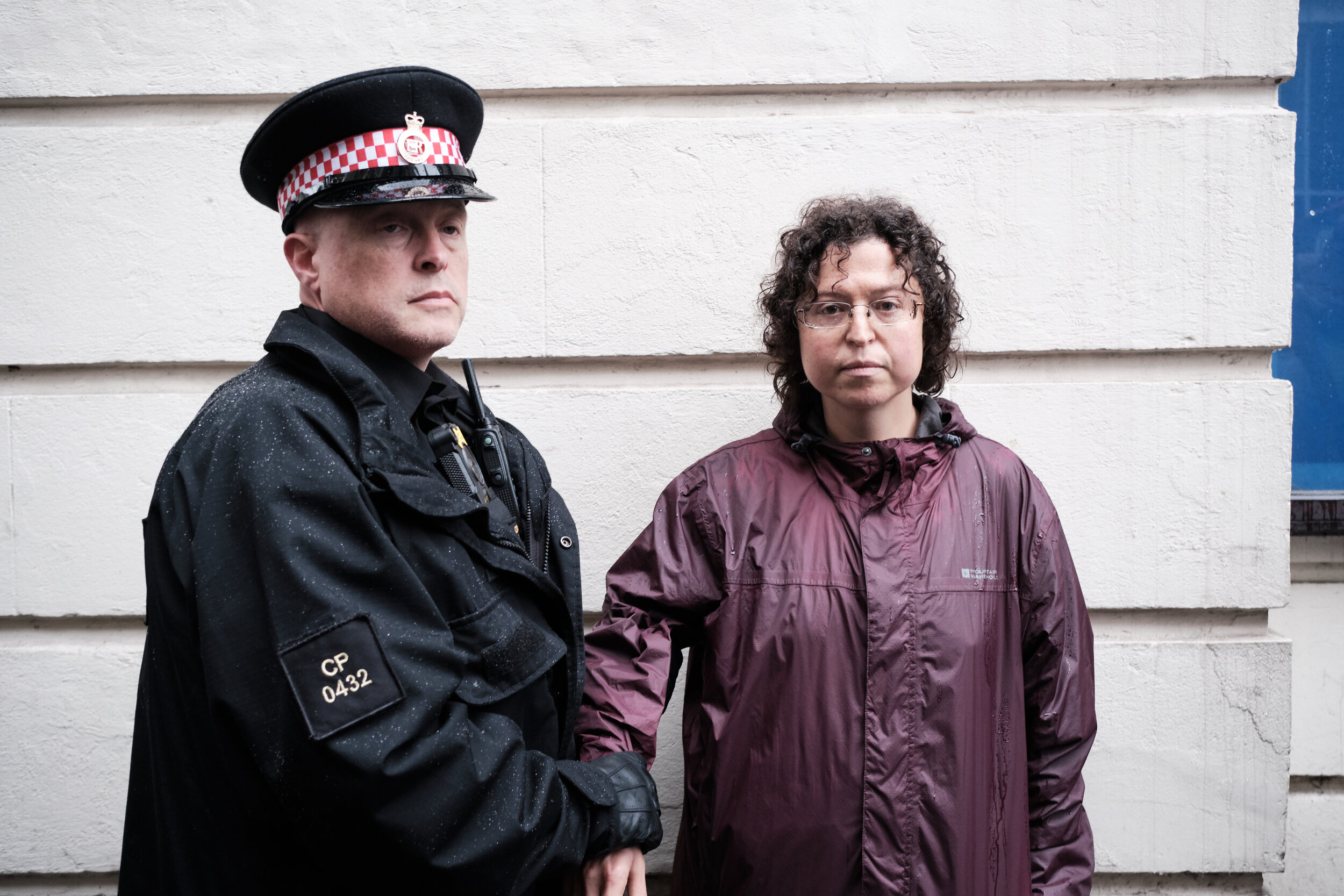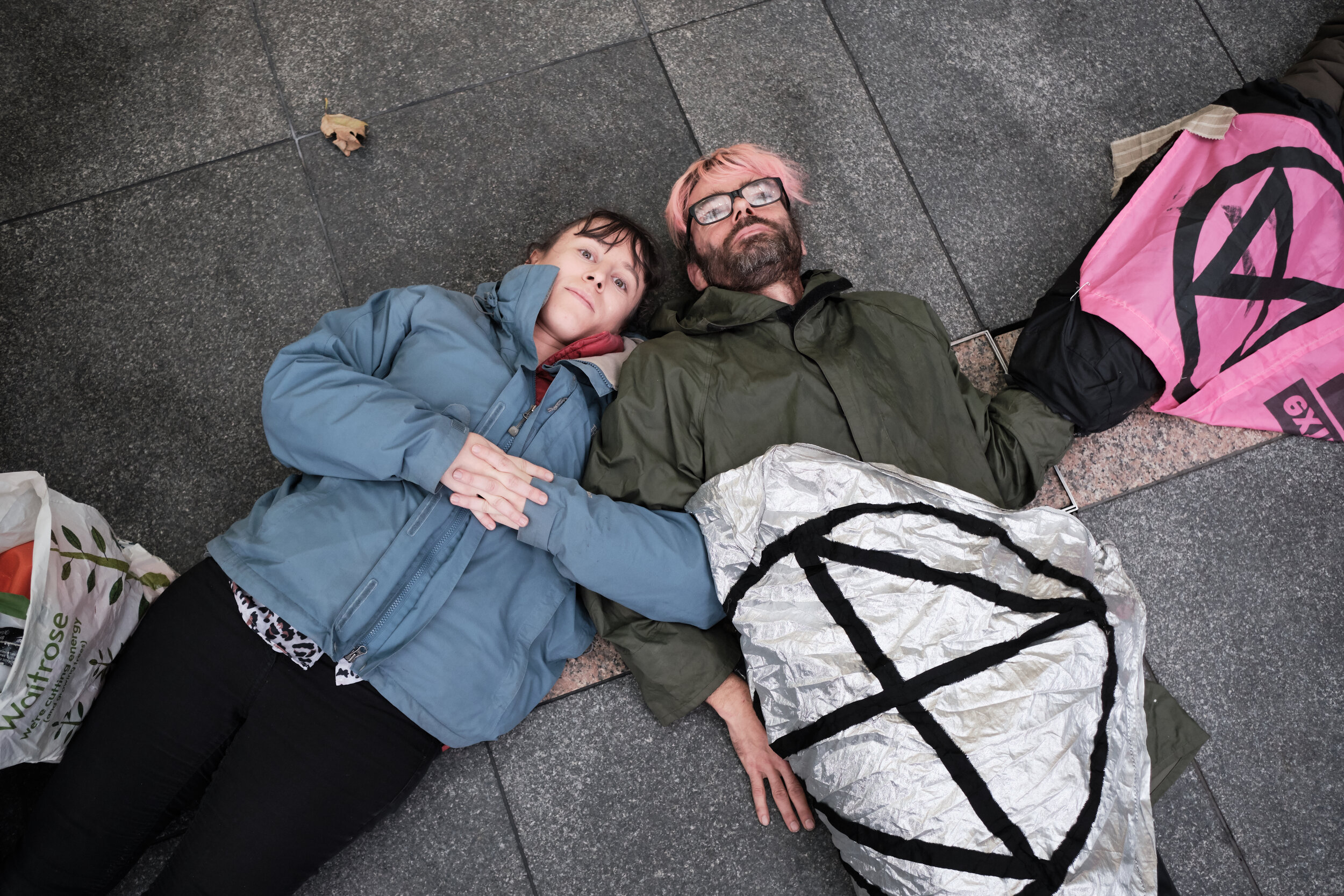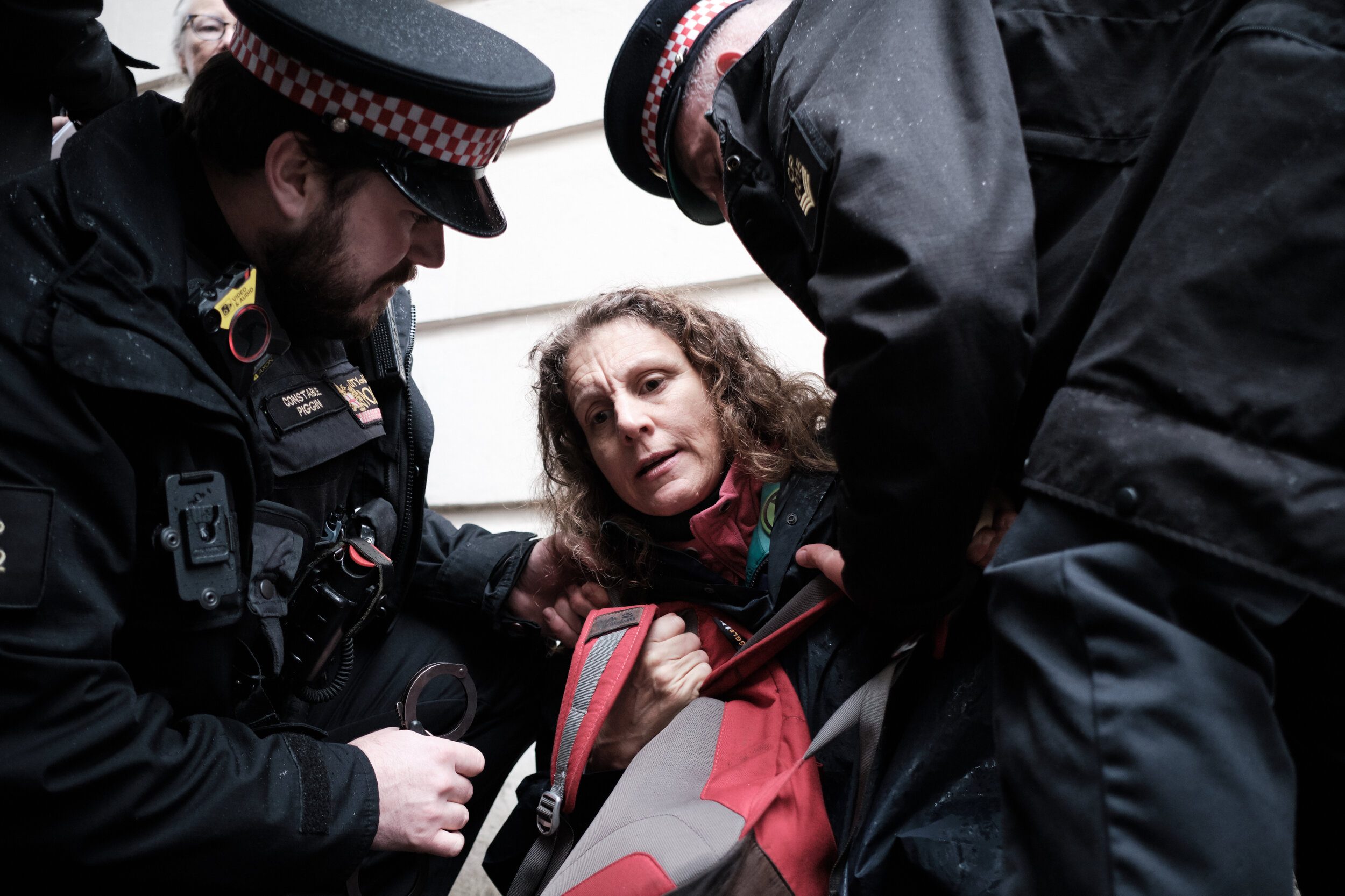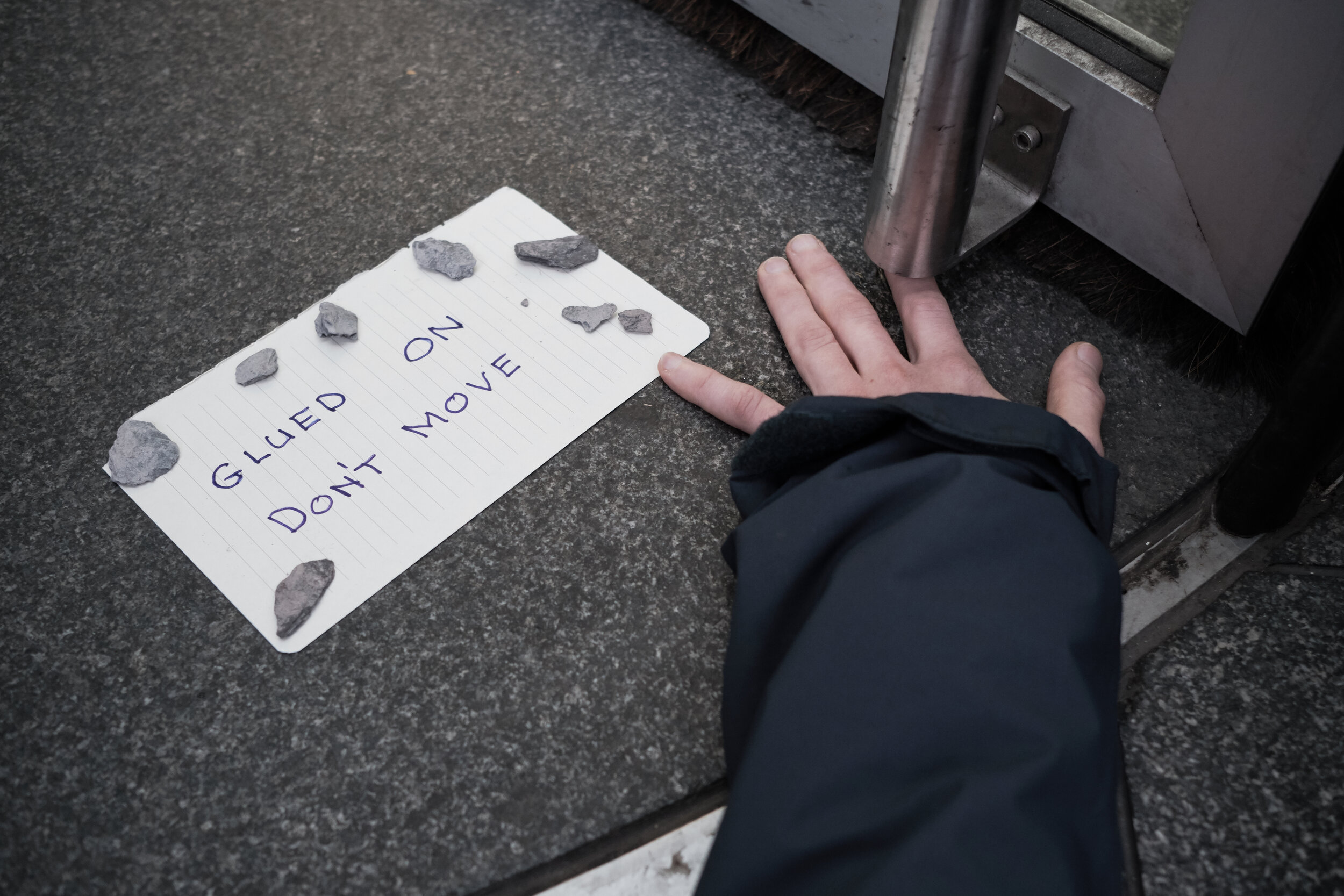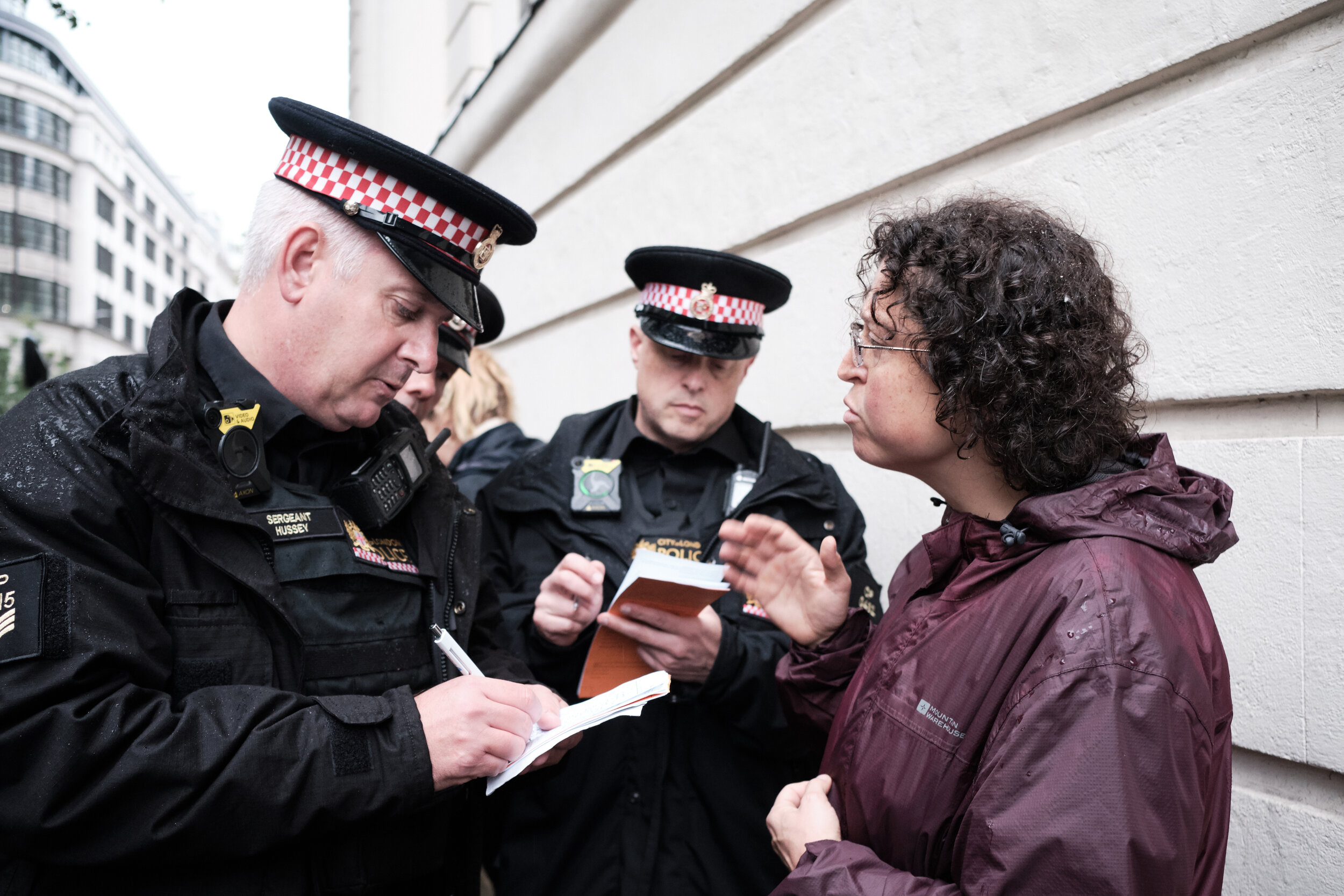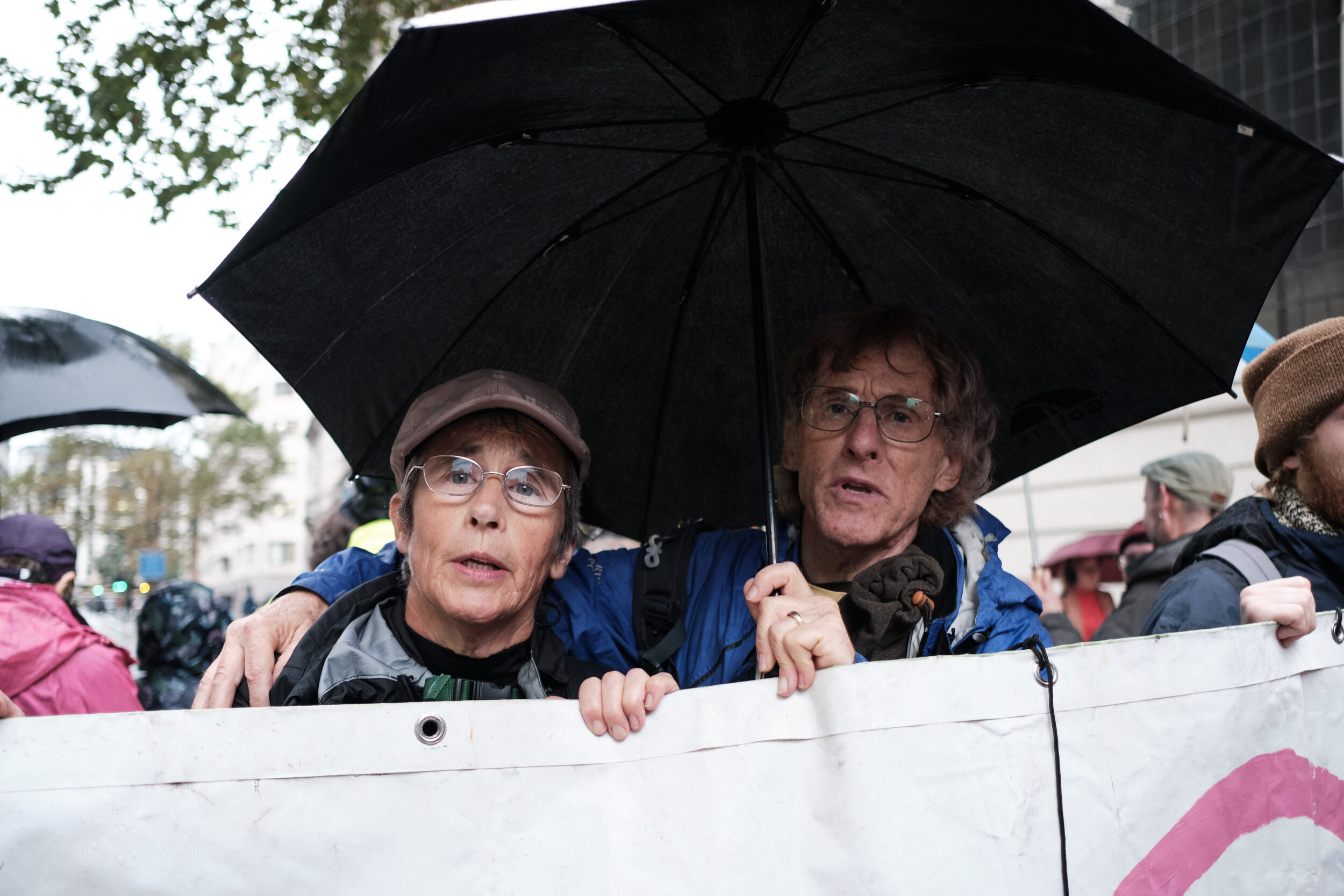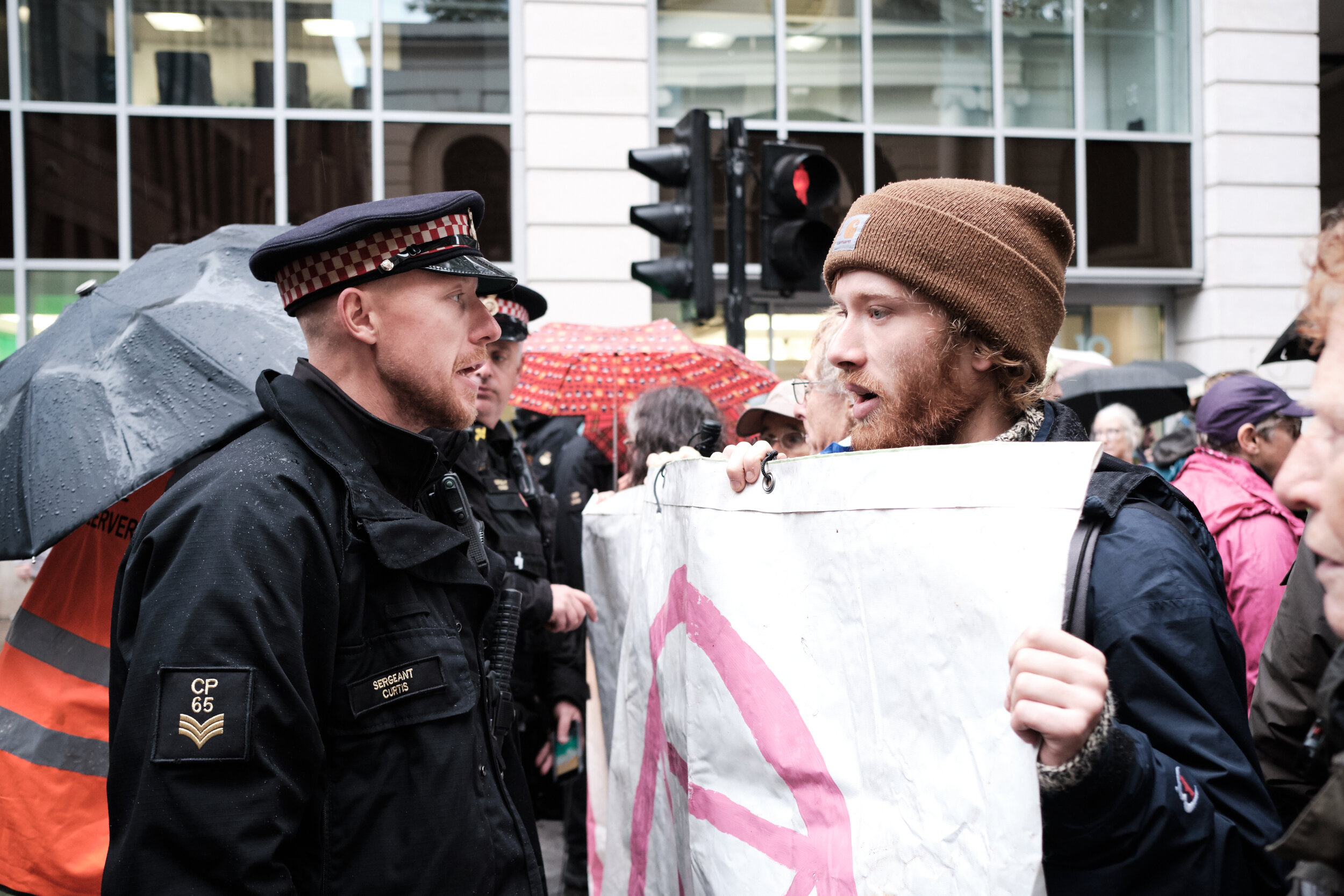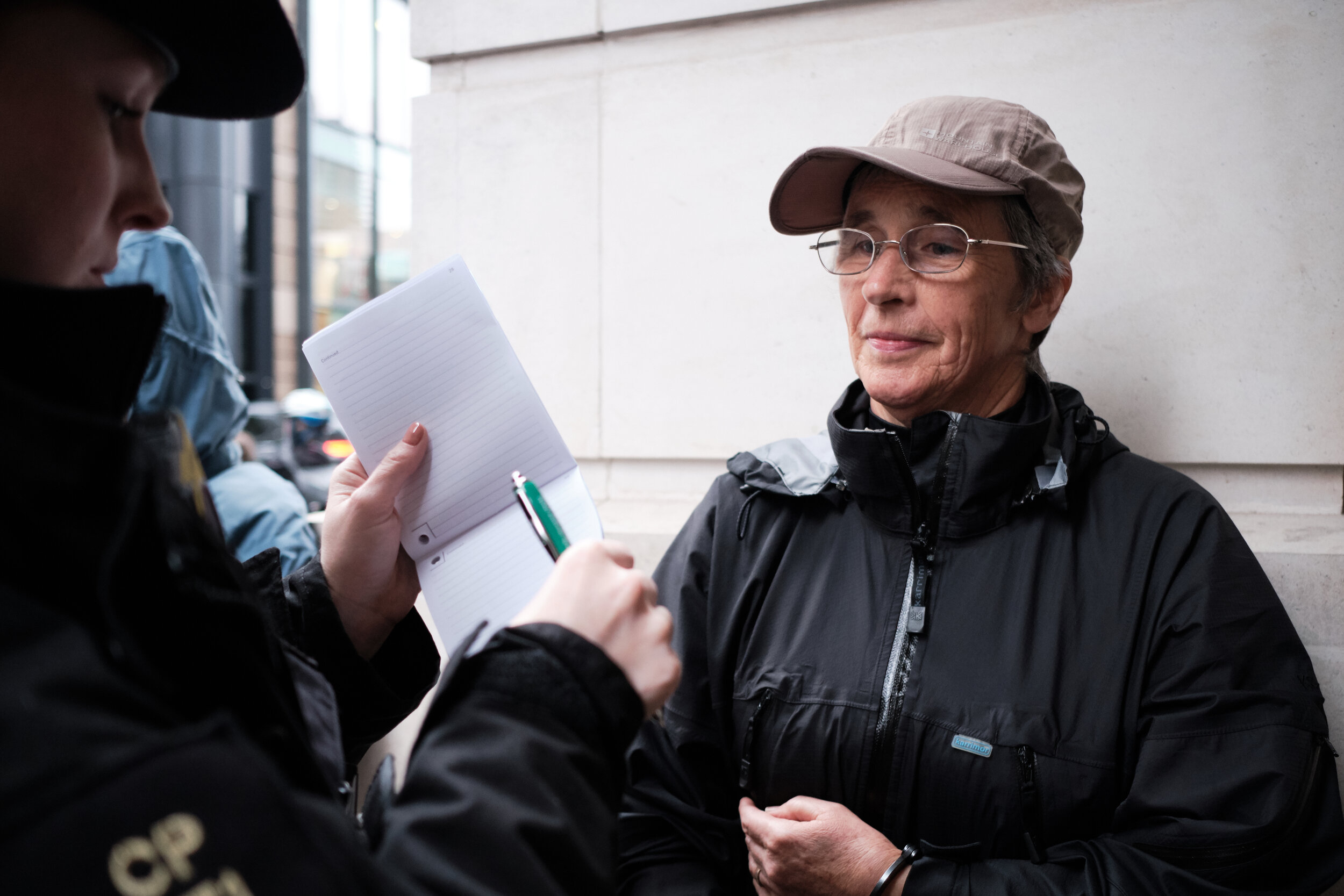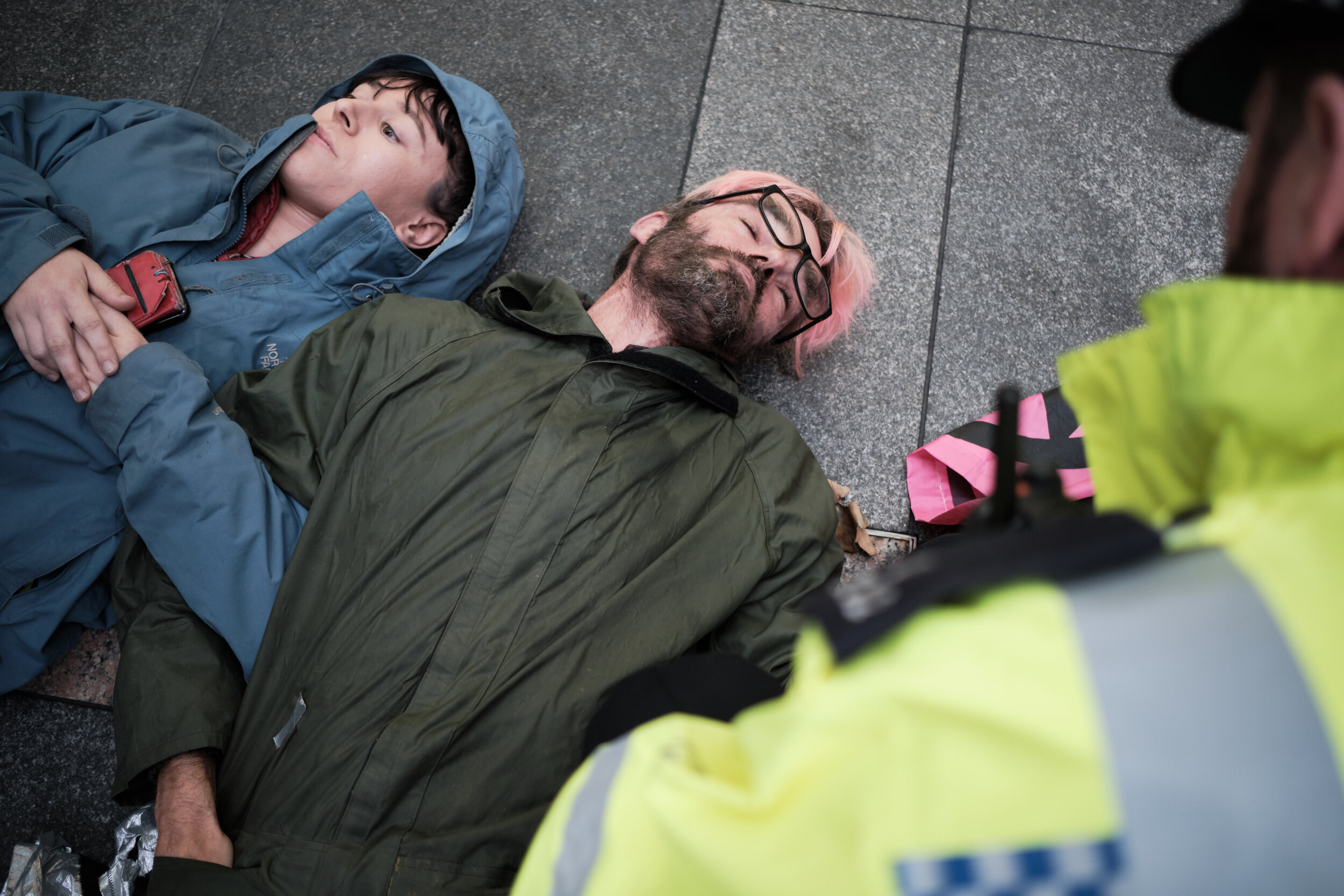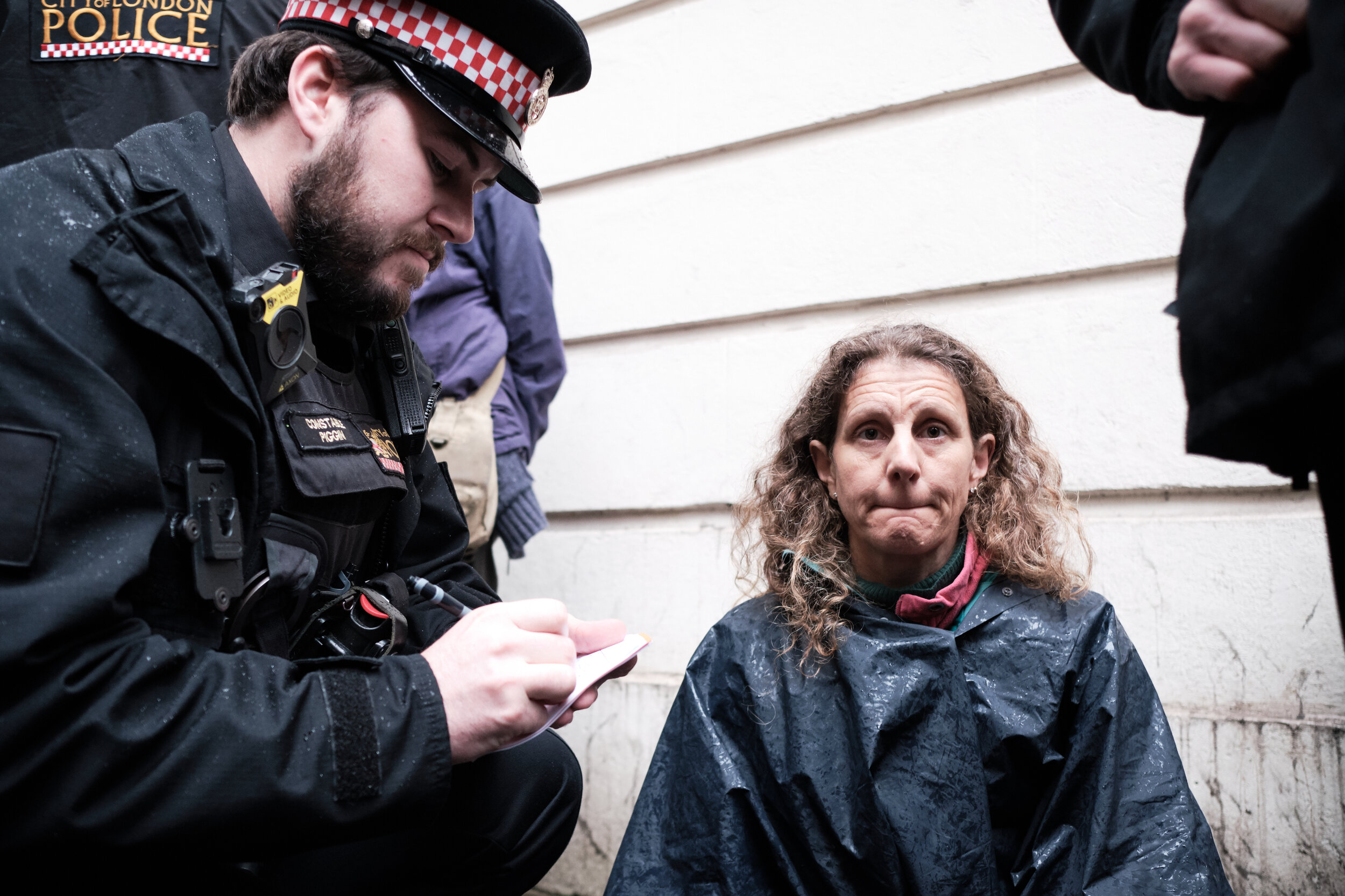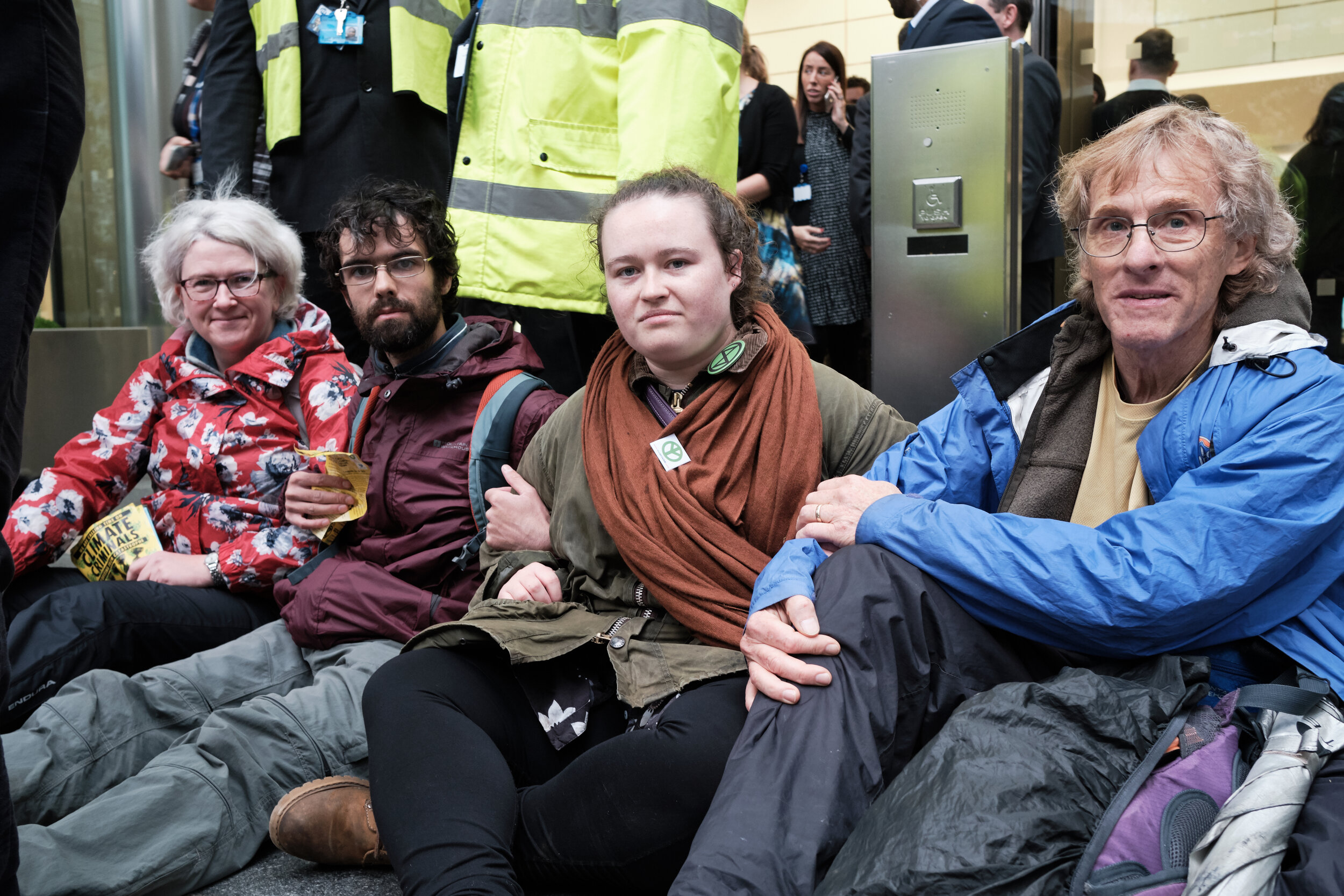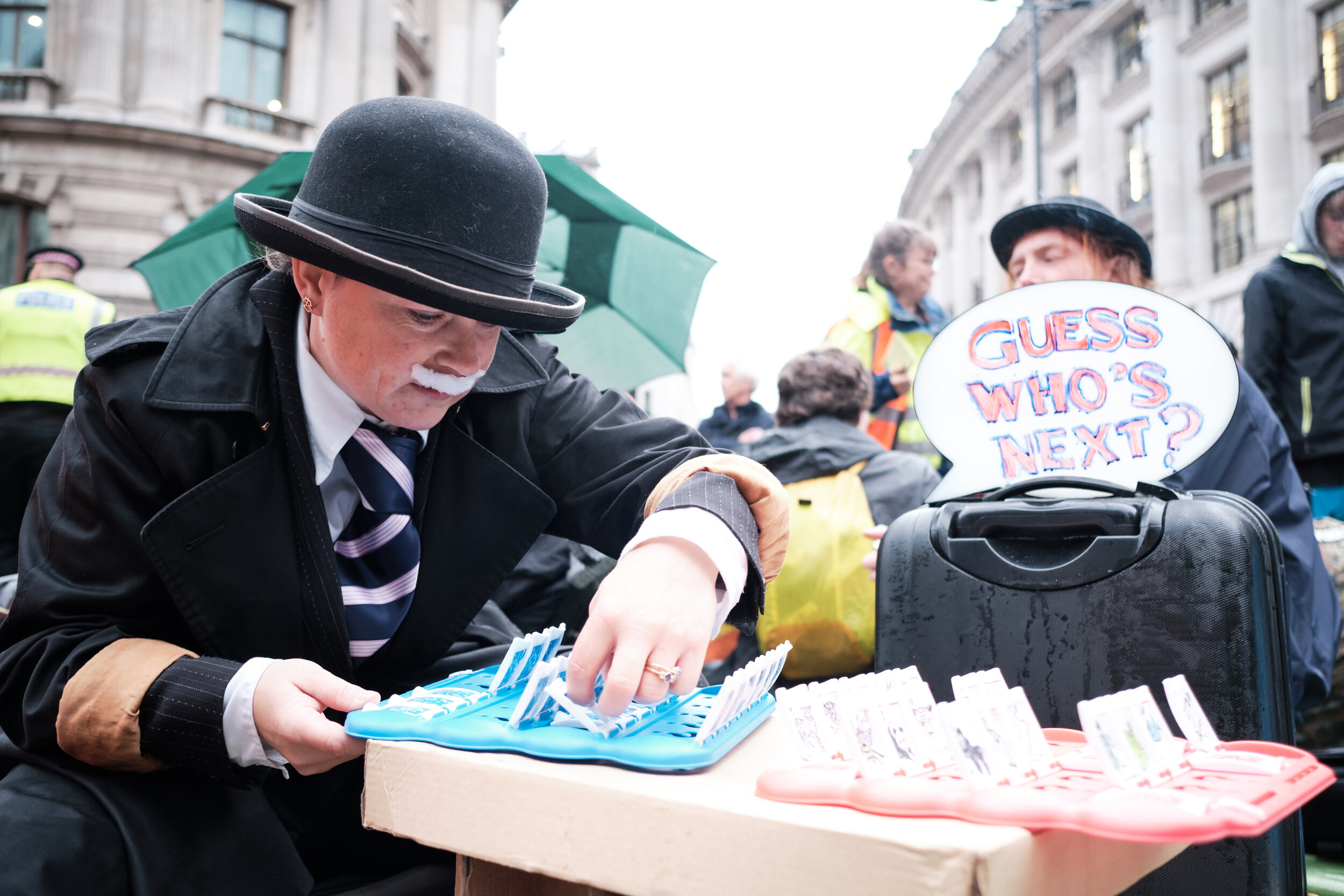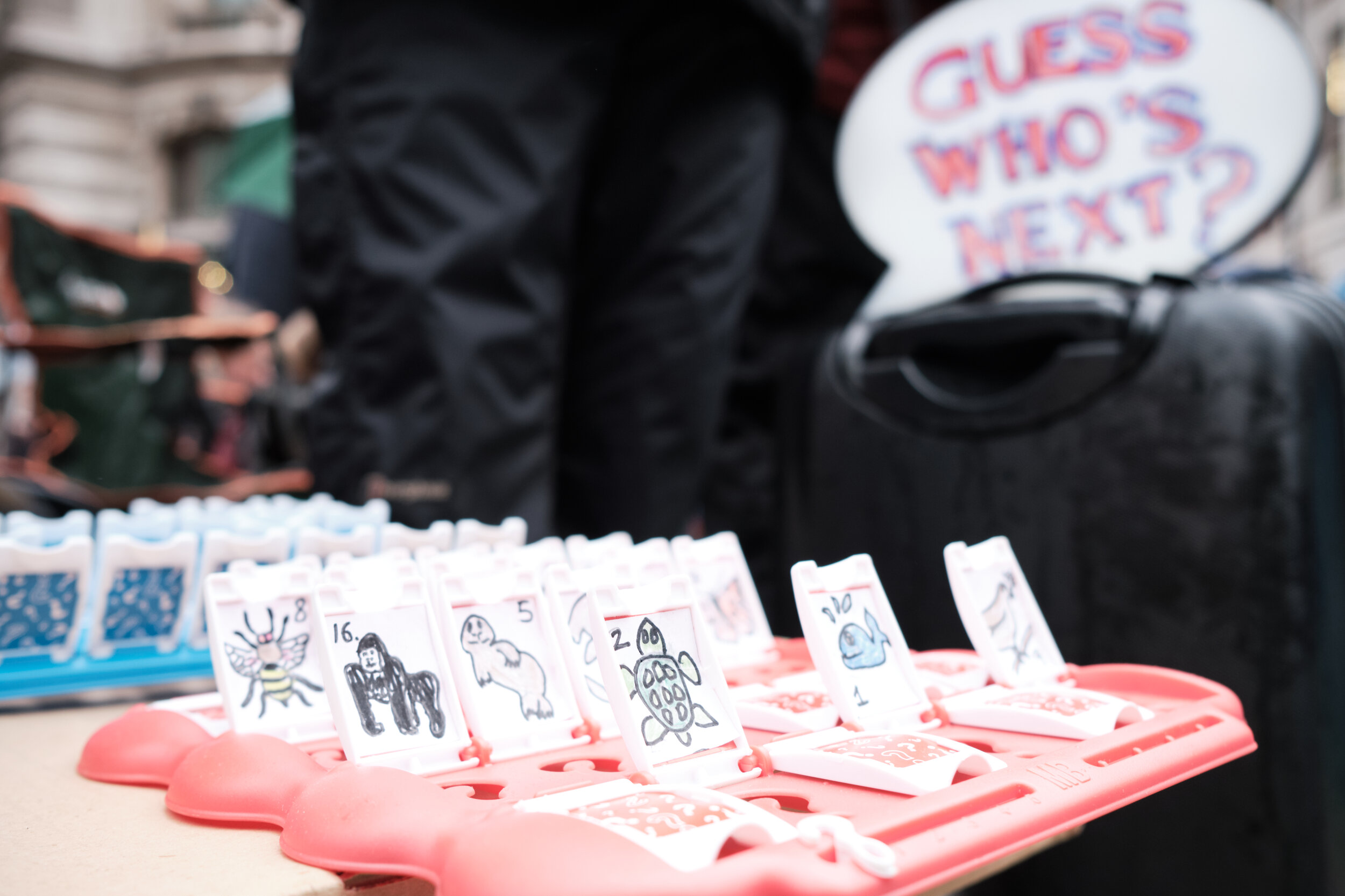Banking on Breakdown
Thomas Dorrington
On October 7, 2019, Extinction Rebellion began their largest act of mass participation, non-violent, civil disobedience yet. Aiming to shut down central Westminster for up to two weeks with 11 protest sites, their demands were clear: force the government to Act Now on the climate and ecological emergency and set up a Citizens’ Assembly to fix our broken politics.
While the focus was on the government and government departments in and around Westminster, the world’s most genocidal corporations were not left off the hook, and on Monday 14th October activists took to the City of London to protest against the complicity of the financial sector in the climate crisis. Money is the oxygen that fuels the fire of climate change, and with nine of the world’s top fossil fuel investors having headquarters in the City over the last three years, this is the epicentre of “business as usual”.
This came on the same day that police issued a London-wide Section 14, effectively banning Extinction Rebellion protests from within the capital, and began clearing the previously legitimate protest site at Trafalgar Square. For the first time in Extinction Rebellion protests, it became evident how much economic disruption the activists were really causing.
Since the closing of this chapter in Extinction Rebellion’s mass protests, senior judges of the High Court ruled the ban to be unlawful. How this ruling will affect future protests, in particular the next International Rebellion in April 2020, and whether the Met will push for a change in law to cope with future protests, is yet to be seen.
Bio
In 2018 I experienced first-hand one of the many threats the climate emergency poses, in the form of an infectious disease: Lyme disease. Soon after I made the decision to withdraw from my Masters Degree at Cambridge University and volunteer full-time with Extinction Rebellion. Since then I have worked in the Media & Messaging team at a local and national level, with a focus on content and photography, documenting both the April and October 2019 Rebellions.
Photography is my form of activism. For me, this means using photos as a way of humanising and normalising civil disobedience: capturing the stories of those taking part in direct action, and giving their voice a platform. Not only does this serve as a means of documentation, but it also has its place in movement building. By giving someone a personal story they can relate to, not just reciting abstract facts or numbers, it helps to see themselves as a part of the movement and mobilises them to want to take action.
I now work part-time as a freelance photographer in Cambridge, where I continue to support activist movements through photography. Outside of Extinction Rebellion, other movements I have worked with include Anonymous for the Voiceless, Zero Carbon Cambridge, Youth Strike 4 Climate, The Save Movement, and Animal Rebellion where I also held the role of Content Coordinator for a period of time.
You can find my portfolio at: https://thomas-terl-photography.co.uk.
